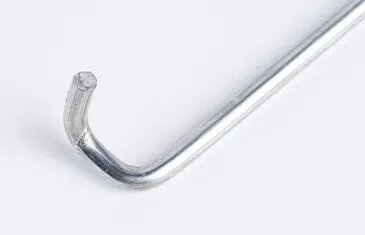-
 Phone:
Phone: -
 Email:
Email:

Exploring the Techniques of Chain Link Fence Weaving for Durability and Security
The Art of Chain Link Fence Weaving
Chain link fences have become a ubiquitous part of the modern landscape, serving countless purposes from residential property boundaries to commercial security solutions. Their widespread use can be attributed not only to their practicality and cost-effectiveness but also to the unique weaving process that creates the distinctive diamond pattern. This article explores the art of chain link fence weaving, its applications, and why it remains a popular choice for many.
The Weaving Process
At the heart of chain link fencing is the weaving process, which transforms galvanized steel wires into the characteristic mesh that defines this type of fence. The production starts with high-quality steel wire, which is carefully drawn to the desired gauge. This wire is then coated with a layer of zinc to enhance its durability and resistance to rust, ensuring longevity even in harsh weather conditions.
The weaving operation involves intertwining the wires to form a series of diamonds. This is achieved using a method called chain link weaving, where the wires are bent and twisted to create a series of connected loops. The resulting mesh is both flexible and strong, allowing the fence to endure pressure while maintaining its shape. The unique diamond pattern not only contributes to the aesthetic appeal of the fence but also serves practical purposes—ensuring visibility while providing security.
Applications and Versatility
Chain link fences are extremely versatile, making them suitable for a wide range of applications. In residential settings, they can define property lines, protect gardens, and keep pets contained. Many homeowners appreciate the visibility that chain link fences provide, allowing them to see their surroundings while keeping unwanted intruders at bay.
In commercial environments, chain link fences are often employed to secure perimeters. They are particularly useful in industrial areas where the need for safety and security is paramount. Additionally, schools and parks frequently use chain link fencing to define areas and keep children safe during playtime.
chain link fence weaving

Beyond traditional uses, chain link fences can also be customized to meet specific needs. For instance, privacy slats can be woven into the mesh, offering a higher degree of seclusion for those who desire it. Additionally, options such as vinyl coating in various colors can enhance the fence's visual appeal, enabling it to blend in more seamlessly with its surroundings.
Maintenance and Longevity
One of the most significant advantages of chain link fences is their low maintenance requirements. The galvanized coating provides excellent protection against the elements, significantly extending the lifespan of the fence. Regular inspections to check for minor damages or signs of rust can help keep the fence in optimal condition for years.
In the event that repairs are needed, the simplicity of the weaving process allows for easy replacements of damaged sections without the need for complete replacement. This not only saves money but also minimizes waste, making chain link fencing an environmentally friendly option.
Conclusion
The art of chain link fence weaving is a fascinating blend of craftsmanship and technology, resulting in a practical and attractive fencing solution. Its unique properties make it suitable for numerous applications, from residential to commercial environments, while its durability ensures that it can stand the test of time with minimal upkeep.
As we continue to develop and innovate in fencing technologies, the classic chain link fence remains a staple in our communities. Its combination of strength, versatility, and simplicity will ensure that it continues to be a favored choice for years to come, highlighting the enduring brilliance of this age-old weaving technique. Whether securing a backyard or outlining a business, the woven diamond pattern of a chain link fence is a testament to the functionality and aesthetic appeal that it brings to our lives.
-
Wire Mesh for Every Need: A Practical SolutionNewsJul.25,2025
-
Steel Fences: Durable, Secure, and Stylish OptionsNewsJul.25,2025
-
Roll Top Fencing: A Smart Solution for Safety and SecurityNewsJul.25,2025
-
Cattle Farm Fencing Solutions for Maximum SecurityNewsJul.25,2025
-
Affordable Iron Binding Wire SolutionsNewsJul.25,2025
-
Affordable Galvanized Wire SolutionsNewsJul.25,2025
-
Wire Hanger Recycling IdeasNewsJul.25,2025








